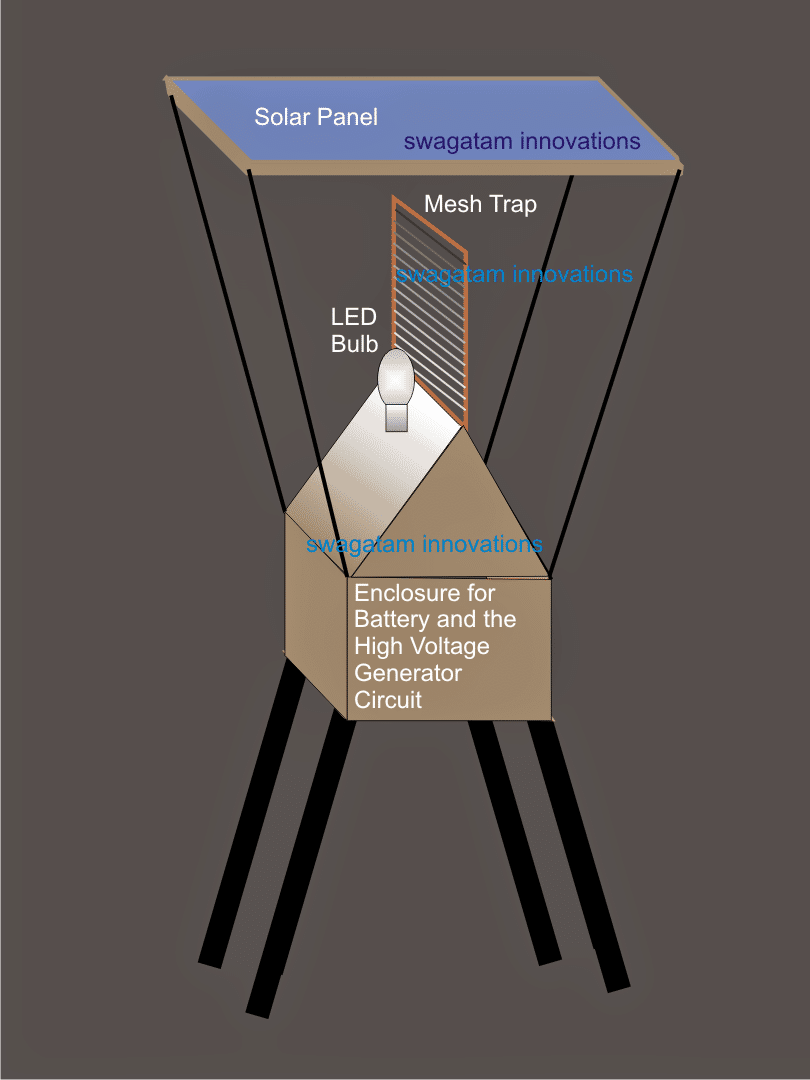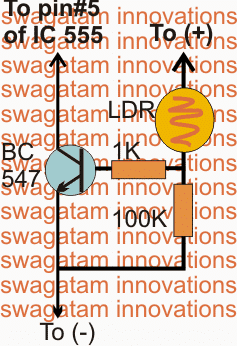The insect killer circuit presented here is designed to attract insects during night, and electrocute them through a high voltage mesh trap. The unit can be installed in farms for protecting crops from potentially harmful insects. The unit being solar powered does not depend on human intervention and works independently.
In one of our previous posts we came across a simple mosquito killer circuit which Incorporated a high voltage electrocuting device for killing the mosquitoes, here too we apply the same principle for terminating the potential insects using a high voltage mesh trap.
Insect Trap Set Up
The following image shows the basic set up that needs to be fabricated and installed within a farm for implementing the insect control actions.


The shown set up indicates a solar panel placed at the top of the structure, the high voltage collector mesh can be seen clamped vertically just below the solar panel, while a LED can be witnessed positioned beside the mesh trap.
The battery and the circuit are enclosed inside a wooden "house" like structure which becomes the base for all the above described fabrications.
The slanting roof of the house shaped cabinet ensures that the insects slide and fall down on the ground while they hit the mesh and get killed.
The bulb is used for attracting the insects, as we all know that any form of light attracts insects towards it and the same principle works here for luring the insects near the high voltage mesh trap.
The bulb could be either an LED lamp, a low wattage CFL lamp or even a black light or an UV wood's lamp.
High Voltage Generator
The high voltage generator circuit is the same which was explained in our previous post, the 22k pot may be used for adjusting the electrocuting arc power such that the spark are strong enough and arc only in the presence of an insect within the mesh, and stay dormant otherwise.
The output from the above linked high voltage generator (CDI coil) is supposed to be integrated with the below shown mesh trap design:

Making the Electrocution Mesh
The electrocutor mesh trap is made by attaching stiff steel or copper wires inside a sturdy wooden frame, in the above shown manner...the wires are then alternately connected using small pieces of connecting wires.
The common ends of the two alternately arranged mesh assembly is then terminated to the CDI coil or the high voltage generator.
Since the battery used for powering the high voltage generator needs to charged with a solar panel, a simple solar charger circuit becomes imperative, the same may be built exactly as instructed in the following article
The ammeter may be eliminated as it's not so important for the present application.
There's another issue that needs to be solved here, the high voltage generator circuit needs to remain switched OFF during the day time while the battery is being charged.
This may be implemented by adding the following simple transistor/LDR circuit with the pin#5 of the IC 555 of the high voltage generator stage.


Hello, Swagatam
I am searching for a solution to the problem of having my dog urinate on my trash container.
Thinking some sort of conductive mat (which he would be standing on) placed by the container which would allow for a harmless but uncomfortable high voltage shock whenever the circuit between the mat and the container was closed by the urine stream .
Any ideas?
Thank you,
Dean
Hello Dean,
The idea can be quite risky and painful for the dog, since we do not have any means to test how painful the shock can be…therefore it is difficult to figure out a proper circuit to implement this idea.
Dear friend Swagatam: in the circuit, the colector (BC547) go to the pin 4 (reset) (LM555), no to the 5 (voltage control), ¿or no? Saludos desde México.
Dear isidro, pin5 is correct, but pin4 will also work if the pin4 is connected with 10k to positive.